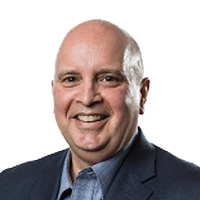Preclinical/translational tools & strategies
Cell & Gene Therapy Insights 2021; 7(1), 107–109
10.18609/cgti.2021.013
As a scientist who has spent the majority of my 30 years career in academia focused on the development and application of novel gene and cell therapy strategies, it has been my honor to serve as the guest editor for this spotlight issue focused on innovative tools and novel strategies aimed at the continued successful development and human application of gene and cell therapies. To see the progress made from the early days, which were focused on developing strategies for harnessing viruses and converting them into gene delivery vectors and understanding the basic biologic properties of stem cells, to where the field stands now with several cell and gene therapies approved for human use, has been a tribute to the hard working research teams that have made those visions of three decades ago a reality. In the past 5 years alone, cell therapies including CAR-T cells such as Kymriah® (Novartis) for the treatment of acute lymphoblastic leukemia, and Yescarta® (Kite Pharma) for the treatment of non-Hodgkin lymphoma, and gene therapies including Luxturna® (Spark Therapeutics) for rpe65 mutation-associated retinal dystrophy, and Zolgensma® (AxeXis) for spinal muscular atrophy, are transforming medical treatment for devastating diseases. That being said, the development of cell and gene therapies is still in progress for numerous additional devastating disorders. The successful development of additional clinically approved therapies will require further innovations - the central theme of this issue, which is comprised of a series of Expert Insight review articles and Commentary pieces from, and Interviews with, leading preclinical and translational R&D experts from the global cell and gene therapy field.
While HSC-targeted gene therapies may be a cure for multiple diseases, their progress to human application can be full of hurdles and issues that have limited their success thus far. Dr. Leoni and colleagues reflect on key learnings from their experience in advancing HSC gene therapies through the development and regulatory pathways for human applications. Their commentary is focused on definition of the necessary preclinical research and models that are essential for the clinical translation of HSC therapies as well as identifying translational gaps and how these can be filled.
One of the primary issues with the development and application of cell therapies, both preclinically and clinically, is the limitations surrounding tracking the cell dispersion, migration and persistence of the cells upon in vivo administration.
The clinical application of T cell-based therapies, including CAR T cells, is advancing rapidly. However there are still key challenges and issues that must be addressed for the continued expansion of applications for these cell therapies to a broader range of diseases. Gary Waanders, Silke Raffegerst and colleagues from Medigene AG discuss the preclinical and translational R&D challenges faced by T cell therapy as it targets more complex diseases.
Dr. Paul J. Fairchild and Charlotte Cossins of the Oxford Stem Cell Institute provide insights on the application of induced pluripotent stem cells (iPSCs) for modeling late-onset diseases. The primary challenge for modeling late-onset disease is the protracted time frame over which they normally manifest in vivo. The article focuses on whether iPSCs can be used for modeling late onset diseases and barriers that need to be overcome.
The preclinical testing of cell and gene therapy strategies has almost always required the application of animal models of disease. Drs. Plata-Salamán and Plata from ESTEVE provide their thoughts and insights on the advent of new strategies to enhance the development and application of animal models of disease to more accurately recapitulate human disease and response to gene therapy.
In the field of adeno-associated virus (AAV) vector-driven gene therapy, while there now exists a greater understanding of patient safety, immunogenicity, and dosing regimens, there remains much work to be done to accelerate development paths. Louise Rodino-Klapac of Sarepta Therapeutics shares some keys to bridging the translational gap to the clinic for AAV-based in vivo gene therapies.
And finally, Olivier Negre, the Founder of Biotherapy Partners, a consulting firm focused on helping with the development of gene and cell therapies, shares his keen insights on the development of gene therapy strategies from preclinical concept to strategies for successful development and application in an interview. Olivier speaks from his extensive experience in the field – especially on the development of Zynteglo®, a novel therapy for transfusion-dependent beta-thalassemia, on which he played a key role.
Affiliation
Bruce A Bunnell
Professor and Chair, Department of
Microbiology, Immunology and Genetics, University if North Texas Health Science Center, Fort Worth, TX, USA 76107
Authorship & Conflict of Interest
Contributions: All named authors take responsibility for the integrity of the work as a whole, and have given their approval for this version to be published.
Acknowledgements: None.
Disclosure and potential conflicts of interest: The author declares that they have no conflicts of interest.
Funding declaration: The author received no financial support for the research, authorship and/or publication of this article.
Article & copyright information
Copyright: Published by Cell and Gene Therapy Insights under Creative Commons License Deed CC BY NC ND 4.0 which allows anyone to copy, distribute, and transmit the article provided it is properly attributed in the manner specified below. No commercial use without permission.
Attribution: Copyright © 2021 Bunnell B. Published by Cell and Gene Therapy Insights under Creative Commons License Deed CC BY NC ND 4.0.
Article source: Invited.
Revised manuscript received: Feb 16 2021; Publication date: Feb 24 2021.

